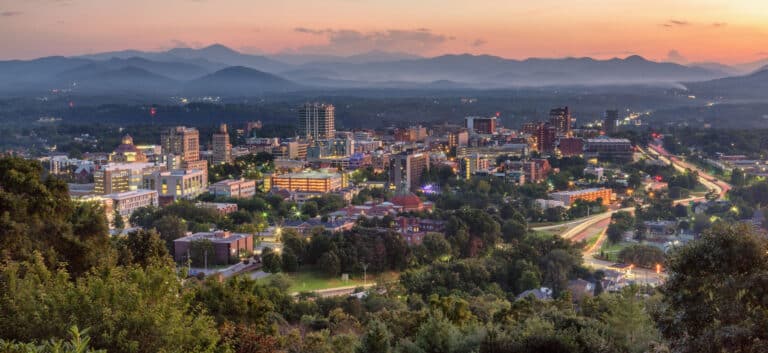EARTH TALK
From the Editors of E/The Environmental Magazine
Dear EarthTalk: As an online gamer, I spend a lot of time in front of my computer. What’s the environmental impact? And are “greener” PCs available? — Bob Grant, Burlington, VT
Online gamers and other heavy computer users are definitely leaving an environmental mark. Depending on when it was made and how it was designed, a standard desktop PC can use anywhere from 60-300 watts when in use, while an inefficient gaming PC with powerful graphics card, multiple hard drives and optical drives, flash memory reader and a 30-inch LCD might consume as much as 750 watts, or about as much as a typical refrigerator. Until July of 2007, government Energy Star requirements only measured a computer’s energy use while in standby mode, which allowed the majority of brands to carry the label.
New stricter efficiency requirements have brought greener models. You’ll find the largest selection from companies like Dell and Hewlett Packard. Many businesses use the Electronic Products Environmental Assessment Tool (EPEAT) to assist in the purchase of greener computing systems, and the evaluations can be useful to consumers, too. EPEAT evaluates and rates computing equipment on 28 efficiency and sustainability criteria, awarding them bronze, silver or gold for overall performance.
Technology company VIA is well regarded as an industry leader in low-wattage processors (central processing units or CPUs), with some barely sipping only a dozen or so watts from the power supply. Some typical VIA designs can outperform competitors using only 23 watts, or less than half the power called for by Energy Star specifications. Of course graphics cards used by PC gamers are serious energy hogs. Your top-end ATI or nVidia card will render great graphics, but use 300 watts or more. Newer cards are better, but much depends on their use. The best advice is to buy only the graphics power you need.
One of the easiest ways to save on computer power is to use technology that automatically rests when you do, and to shut your computer down when you’re not using it. Windows XP allows users to configure power management settings, and Vista Ultimate lets you configure power-saving options in even more ways. Vista can actually throttle its power consumption for some tasks and power down at other times. If you’re just typing a Microsoft Word document, performance will back down, whereas if you are editing video in a powerful program like Adobe Premier Pro, Vista will use all the processing power available.
Bear in mind that screen savers are not energy savers. In fact, power-down features may not work if you have a screen saver activated. Happily, LCD color monitors do not need screen savers. In terms of shutting down, while PCs use a small amount of energy when they start up, it’s considerably less than the energy used when they are on for long periods of time. Consider turning off the monitor if you aren’t going to use your PC for more than 20 minutes, and both the CPU and monitor if you’re not going to use your PC for more than two hours.
If you’re concerned about the “wear and tear” of turning PCs on and off, don’t be. Most PCs reach the end of their “useful” life due to advances in technology long before the effects of being switched on and off multiple times can have a negative impact on their service life.
CONTACTS: Energy Star, www.energystar.gov; EPEAT, http://epeat.net; Recycling an old monitor, www.epa.gov/epaoswer/hazwaste/recycle/ecycling/donate.htm; VIA, www.via.com.
——————–
Dear EarthTalk: Vegetarians and vegans are so self-righteous about not eating meat and how meat eating is so bad for the environment. How true are these claims? — Frank Doolittle, Sudbury, MA
There has never been a better time to go vegetarian. Mounting evidence suggests that meat-based diets are not only unhealthy, but that just about every aspect of meat production—from grazing-related loss of cropland, to the inefficiencies of feeding vast quantities of water and grain to cattle, to pollution from “factory farms”—is an environmental disaster with wide and sometimes catastrophic consequences.
There are 20 billion head of livestock on Earth, more than triple the number of people. According to the Worldwatch Institute, global livestock population has increased 60 percent since 1961, and the number of fowl being raised for food has nearly quadrupled in the same time period, from 4.2 billion to 15.7 billion.
The 4.8 pounds of grain fed to cattle to make one pound of beef represents a colossal waste of resources in a world teeming with hungry and malnourished people. According to Vegfam, a 10-acre farm can support 60 people growing soy, 24 people growing wheat, 10 people growing corn—but only two raising cattle.
Food First’s Frances Moore Lappé says to imagine sitting down to an eight-ounce steak. “Then imagine the room filled with 45 to 50 people with empty bowls… For the feed cost of your steak, each of their bowls could be filled with a full cup of cooked cereal grains.” Harvard nutritionist Jean Mayer says that reducing U.S. meat production 10 percent would free grain to feed 60 million people.
U.S. animal farms generate billion of tons of animal waste every year, which the Environmental Protection Agency says pollute our waterways more than all other industrial sources combined. The infamous 1989 Exxon Valdez oil spill dumped 11 million gallons of oil into Prudoe Bay, but the relatively unknown 1995 New River hog waste spill in North Carolina poured 25 million gallons of excrement into the water, killing 14 million fish and closing 364,000 acres of shell fishing beds. Hog waste spills have caused the rapid spread of Pfiesteria piscicida, which has killed a billion fish in North Carolina alone.
Other than polluting water, beef production alone uses more water than is used in growing our entire fruit and vegetable crop. And over a third of all raw materials and fossil fuels consumed in the U.S. are used in animal production. Meat also increases our carbon footprints. According to the United Nations’ Food and Agriculture Organization, livestock around the world contribute more greenhouse gases (mostly methane) to the atmosphere—18 percent of our total output—than emissions from all the world’s cars and trucks.
“There is no question that the choice to become a vegetarian or lower meat consumption is one of the most positive lifestyle changes a person could make in terms of reducing one’s personal impact on the environment,” says Christopher Flavin of the Worldwatch Institute. “The resource requirements and environmental degradation associated with a meat-based diet are very substantial.”
CONTACTS: Food First, www.foodfirst.org; UN Food and Agriculture Organization, www.fao.org; Worldwatch Institute, www.worldwatch.org.
GOT AN ENVIRONMENTAL QUESTION? Send it to: EarthTalk, c/o E/The Environmental Magazine, P.O. Box 5098, Westport, CT 06881; submit it at: HYPERLINK “http://www.emagazine.com/earthtalk/thisweek/” www.emagazine.com/earthtalk/thisweek/, or e-mail: HYPERLINK “mailto:[email protected]” [email protected]. Read past columns at: HYPERLINK “http://www.emagazine.com/earthtalk/archives.php” www.emagazine.com/earthtalk/archives.php.







